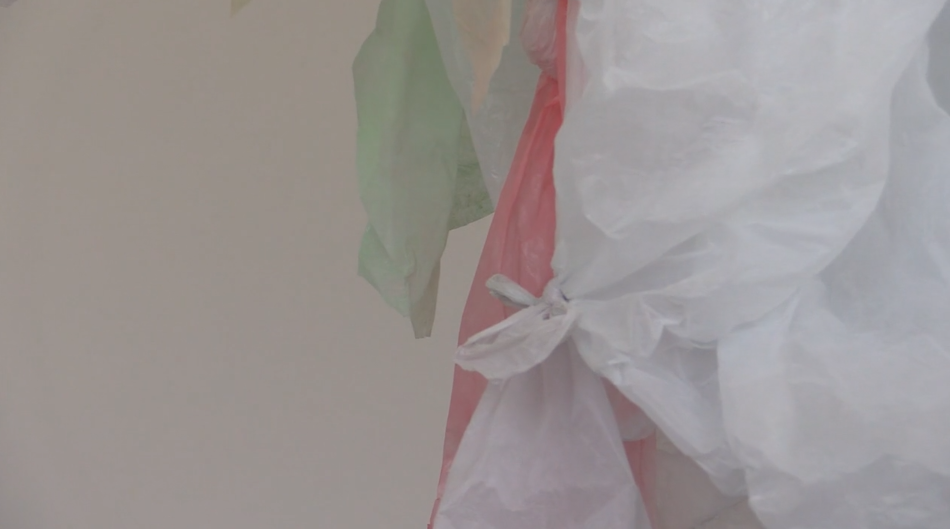
Karen Sweeney (Exhibitions, IMMA) introduces Karla Black’s dynamic new body of sculptural work currently on show in the gallery spaces of IMMA. Continue reading Video. Karen Sweeney introduces Karla Black

Karen Sweeney (Exhibitions, IMMA) introduces Karla Black’s dynamic new body of sculptural work currently on show in the gallery spaces of IMMA. Continue reading Video. Karen Sweeney introduces Karla Black
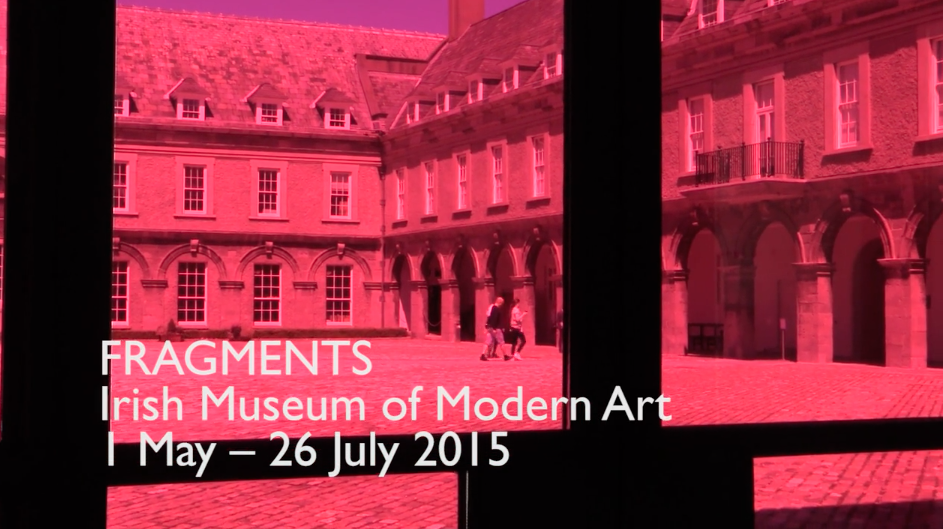
Marguerite O’Molloy (Collections, IMMA) introduces the current exhibition: Fragments, which will run until 26 July. Fragments encompasses a wide variety of examples from the IMMA Collection, ranging from the 1950’s through to contemporary works recently acquired for the Collection.
This exhibition borrows its title from Philosopher Walter Benjamin’s comparison of the work of translation to re-assembling fragments of a broken vase – the individual fragments must come together, but need not be like each other. This could also be taken as an allegory for exhibition making, or collecting.
The exhibition includes the first-showing since their acquisition of a number of recent works by Irish artists, including The sky looks down on almost as many things as the ceiling, (2013) a wall based sculpture by Aleana Egan and commissioned works by Ronan McCrea and Alan Phelan. The latter two are lens-based works titled Medium (Corporate Entities) and Include me out of the Partisan Manifesto, which resulted from IMMA’s programme of temporary exhibitions. McCrea’s photographic enquiry into spaces where corporate art collections are hung, took place before the economic collapse.
Caoimhe Kilfeather’s newly acquired lead sculpture Abbreviation, (2011) joins works by Michael Warren, Shirazeh Houshiary, Brian King and Kathy Prendergast selected from the IMMA Collection. These works have an aesthetic and historic affinity with the sculpture and drawing of Gerda Frömel – whose retrospective, will be running concurrently in IMMA’s Garden Galleries.
GILBERT & GEORGE’s large-scale photowork Smoke Rising, (1989), Nigel Rolfe’sDance Slap for Africa, (1983) and will be shown along with other activist works or works with emphasis on performance including a film by Phil Collins and historic works by Marina Abramović.
Fragments will include a number of Subjectivist works by WW II imigrès, the White Stag artists, bequested by the late artist Patrick Scott to IMMA in 2014. Scott exhibited with the White Stag from 1941 and the group swopped each others paintings. The donation is particularly rich in key works by Kenneth Hall who was a close friend of Scott.
Now in her 85th year, Camille Souter’s works included in Fragments are among some of her finest works of the 1950s and 60s and show her interest in Miró, Klee, Jackson Pollock and Arte Povera. In 1958 Lucio Fontana bought two of her paintings.
A pioneer of Conceptual Art and author of the renowned Inside the White Cube, Brian O’Doherty / Patrick Ireland’s enduring obsession with themes of language, perception and identity are represented by a selection of his works from the IMMA Collection dating from 1954 onwards and include a major new Rope Drawing which is a recent gift to IMMA by the artist, entitled: The doors to good and evil and the windows to heaven – Christina’s World, Rope Drawing No # 124, 2015.
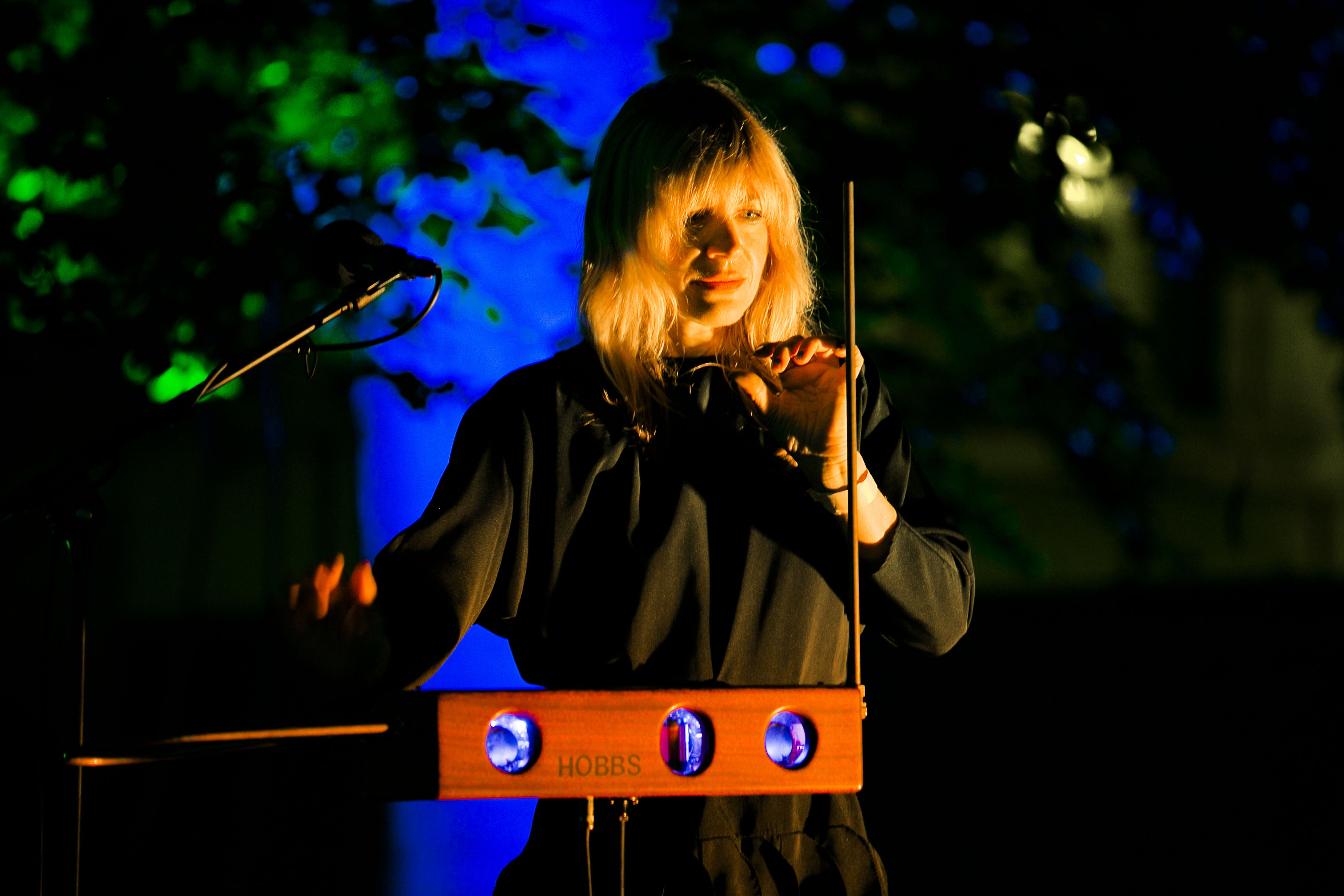
I went to a reading of Etel Adnan’s in the Serpentine last year and I was really taken with her use of language and with her exhibition at IMMA, and so the idea behind the curated series of performances at the IMMA Summer Party came about. In the Silence of the night is a line taken from Etel Adnan’s novel Sitt Marie Rose; the style of writing is a mixture of conversations, news bulletins, monologues, and interviews. The idea was to engage with open forms of expression, through spoken word, live art, sculpture and music. The performances were experimental in design but ultimately were a celebration of live gestures and collaborations.
The performances were staged in the garden terrace, the courtyard and the formal gardens a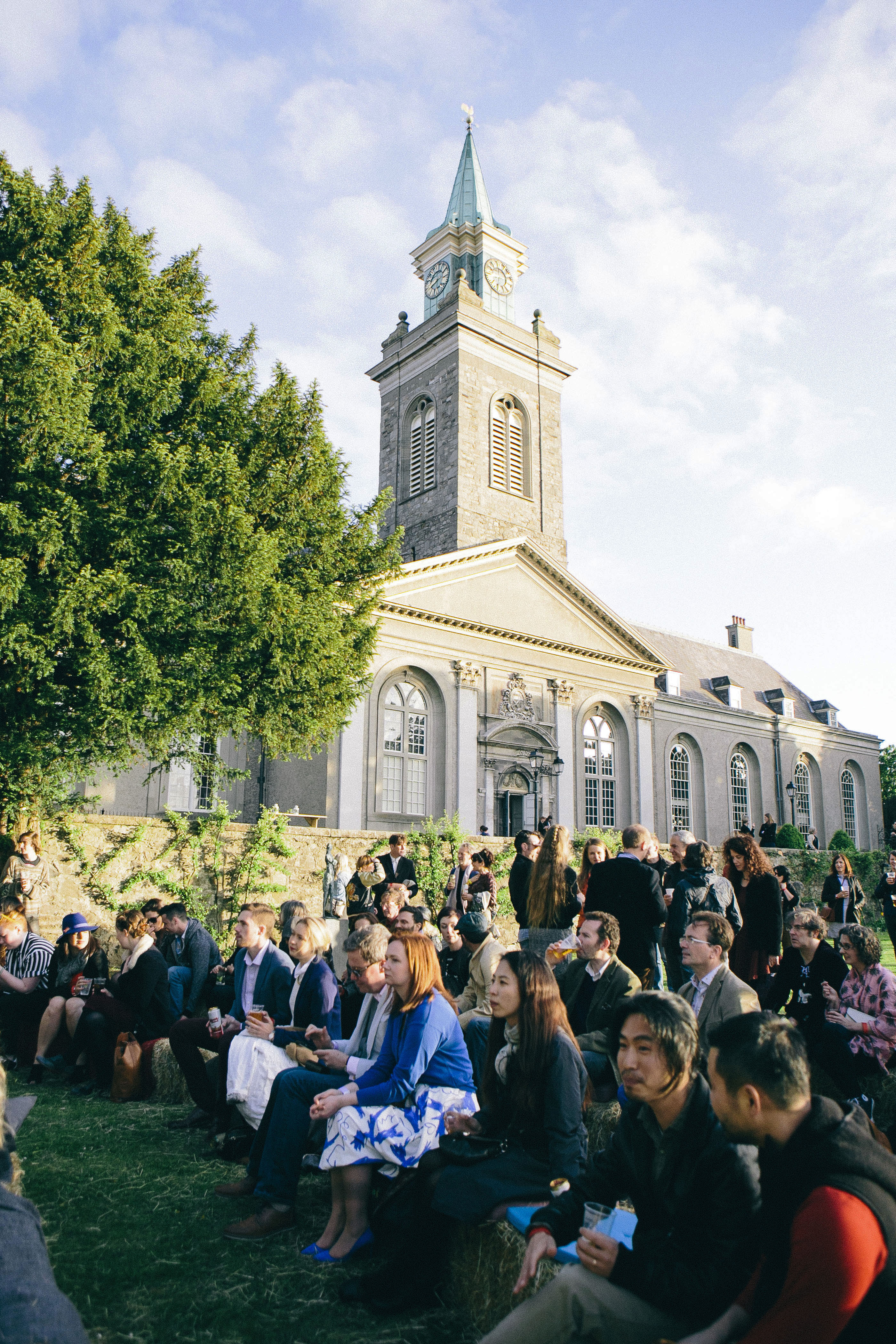 t IMMA, punctuating the evening. The garden terrace was intimate and allowed for the audience to come and go during performances.
t IMMA, punctuating the evening. The garden terrace was intimate and allowed for the audience to come and go during performances.
The night began with Ruth Proctor; tap dancers interpreting the sound of a Columbian rainstorm that was recorded by the artist. Each tap dancer did a solo interpretation until it reached a crescendo with three dancers on stage. The effect was immediate; drawing people from the gardens and the Great Hall by the amplified sound of the dancers.
Dimitra Xidous’ rhythmic poetry set the stage for the first of the spoken word performances. Her style is performative in delivery and both personal and humorous: the audience responded with loud laughter and applause after every poem.
Next we had Sarah Jones, who wrote a play in response to IMMA Collection Fragments – Jones and a collaborator acting a play referenced the setting and the historical nature of the IMMA/Royal Hospital Kilmainham building, as well as Deborah Brown’s Glass Fibre Form Orange in particular as it currently hangs with the Bird of Paradise flower, and Gordon Lambert’s collection. The descriptive nature of the piece allowed the audience to imagine themselves within the east wing looking at the piece. The audience was engrossed in listening so as not to miss a piece of the story.
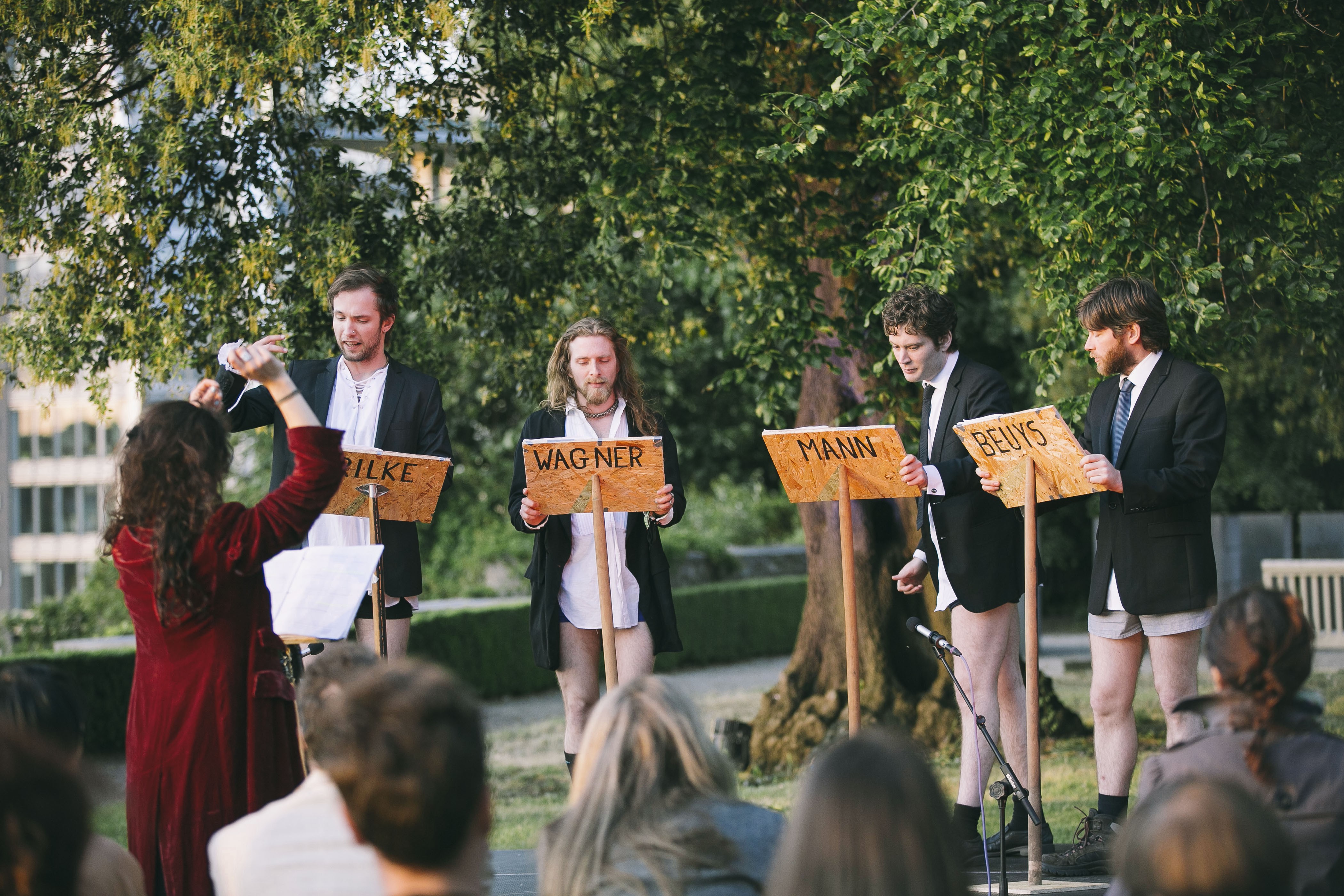 Ella De Burca stormed the stage with ‘Aphorisms: I Knew That Word Once’. It involved four actors who played historical individuals from the past – Rilke, Wagner, Mann and Beuys. The actors debated about concepts of art and creative freedom. De Burca conducted the debates until they collapsed into chaos as the voices competed to be heard. It was an energetic, humorous performance and the audience responded with the same enthusiasm as it was delivered.
Ella De Burca stormed the stage with ‘Aphorisms: I Knew That Word Once’. It involved four actors who played historical individuals from the past – Rilke, Wagner, Mann and Beuys. The actors debated about concepts of art and creative freedom. De Burca conducted the debates until they collapsed into chaos as the voices competed to be heard. It was an energetic, humorous performance and the audience responded with the same enthusiasm as it was delivered.
Sally Rooney followed with a reading from her new poems, which talked about love and relationships and the trials and tribulations of traveling with a lover. While quite personal poems they were quite self-deprecating at times. She had a loyal following of listeners as the evening grew colder.
Claire-Louise Bennett read from her new collection of works titled Pond, delivering her musings on everyday existence and visiting Emile Zola’s grave while eating an apple. Her digressions in her stories and sharp wit seemed to charm the audience to go along for the ride.
Meanwhile in the courtyard, Ella De Burca’s inflatable Doric column Utilitarian Object #1 begins its rise, the wind swaying the piece as the air filled the column, onlookers taking photographs or queuing for Indian while the artwork ascended. The plaster stucco piece Utilitarian Object #2 was illuminated by the courtyard lights and was more subdued than its neighboring column.
Darkness enveloped the formal gardens and set the tone for multi-instrumentalist Dorit Chrylser. Her instrument of choice, the theremin, has a haunting effect, amplified by Dorit’s voice and gestures as she moved around the instrument. Her wizardly playing of the theremin’s invisible energy fields and her dynamic performance kept the audience in thrall as the blue sky turned black.
As Dorit’s music faded, Lee Welch’s piece could be seen in the distance as a blue figure illuminated in the garden. The audience gathered by the side of the terrace to watch as the statue, infused by light and fog and seeming to almost levitate from its spot, came alive: an active participant in the evening draped in golden fabric.
The audience activated these visceral encounters, which proved to be both provocative and entertaining. As the performances ended we moved towards the Great Hall to get some warmth and to dance the night away.
Mary Cremin
Curator SUMMER RISING 2015
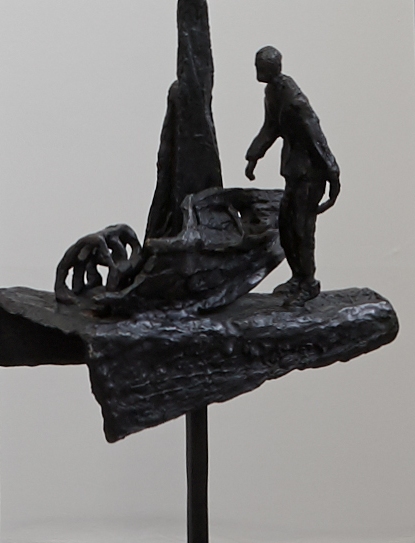
A work by Deborah Brown, currently on show in the Fragments exhibition, draws inspiration from a text by W.B. Yeats. The sculpture titled The Gate, (1994) was purchased for the IMMA Collection in 2002.
Below is an excerpt from a handwritten letter dated 24 February 2003 from Brown to IMMA. In it, the artist describes some of the scenarios depicted in the work, which were drawn from the W.B. Yeats tale The Merrow:
“The Gate symbolizes freedom, it is open and the key is in the keyhole. The scenarios inserted at intervals on the grid-like structure have themes dealing with human freedom. The themes were suggested to me by songs in Mahler’s cycle “Des Knaben Wunderhorn” and a legend or folk tale which I read in W.B. Yeats “Irish Fairy and Folk Tales” The Merrow (who was called Coomara).
On the left side of the gate the scenarios are suggested by the songs. The boy is imprisoned in his cell but his thoughts are free. He is sitting within an open grid box. In his thoughts he goes up into the mountains and knocks on the door of his lover. The door is symbolized by an open door frame structure.
On the right side scenarios have been suggested by the Irish legend; The Merrow (Coomara). He makes friends with a fisherman called Jack and invites him down to his house at the bottom of the sea and shows him his room where he keeps the Souls of drowned sailors in his “Soul Cages”. They look like lobster pots. Jack, who is worried by this, invites Coomara to his own house on land, gets him drunk and when Coomara falls asleep Jack goes back down to the seabed again and releases the Souls. My scenarios portray Jack sitting on a rock waiting for Coomara to come and on the seabed with a lobster pot-like cage about to release the Souls.
The legend is worth reading. There is a lot more in it than I have written down.”
Brown’s work can be viewed in the exhibition IMMA Collection: Fragments from 1 May through 26 July 2015.
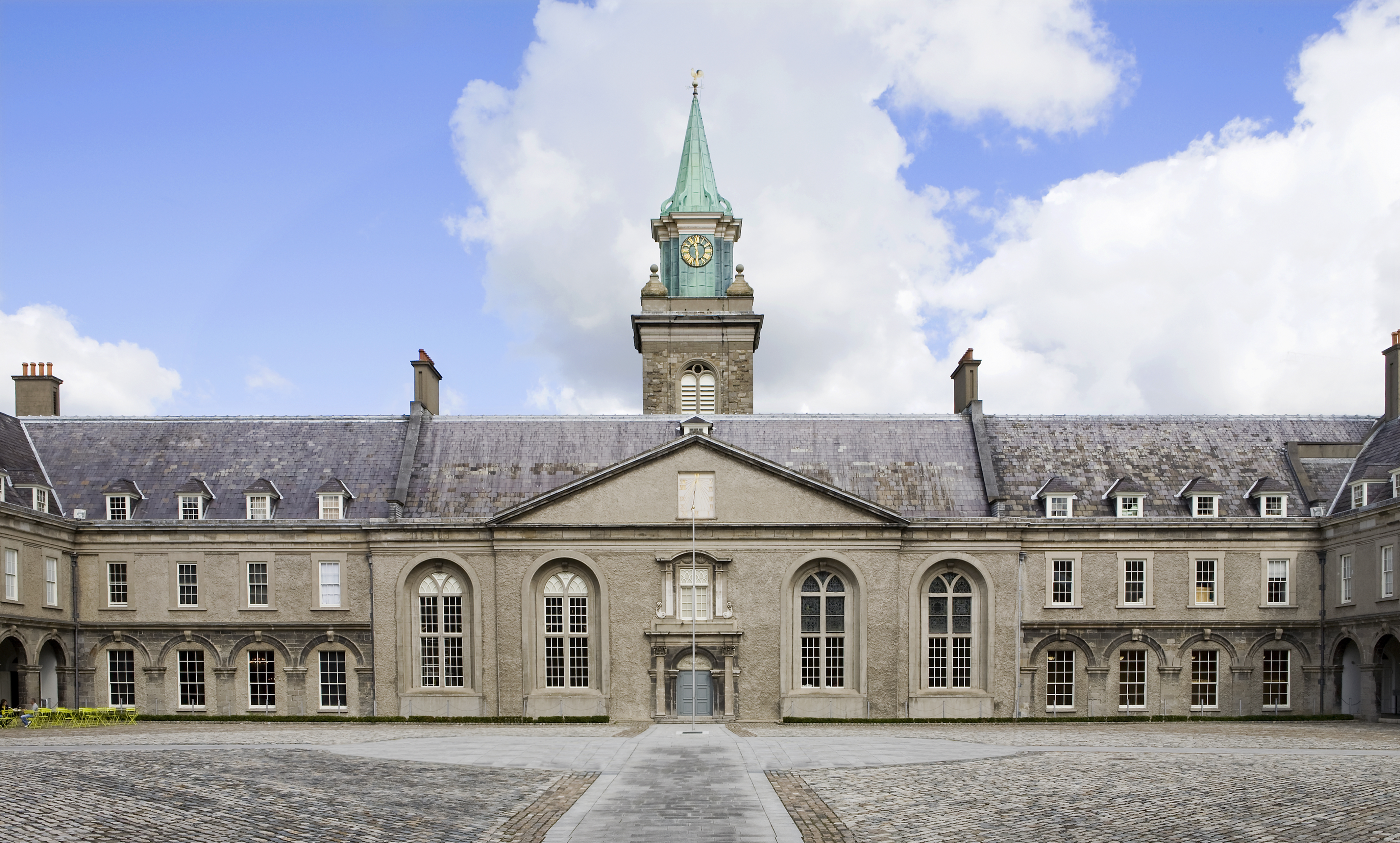
The Irish Museum of Modern Art is extremely fortunate to be housed in the Royal Hospital Kilmainham, one of the finest 17th-century buildings in Ireland. Most notably, the RHK was open as a retirement home and infirmary for nearly 250 years for generations of military veterans who lived and died here. However the history of the Kilmainham site also includes ancient burial grounds, early Christian monuments, a Viking settlement and a medieval monastery.
While our focus may be on modern and contemporary art, we are constantly drawing inspiration from our historic surroundings. This Sunday 14 June, on the concluding day of SUMMER RISING: The IMMA Festival, we are focusing on the exploration and celebration of the heritage of the RHK. Continue reading A Celebration of History at IMMA
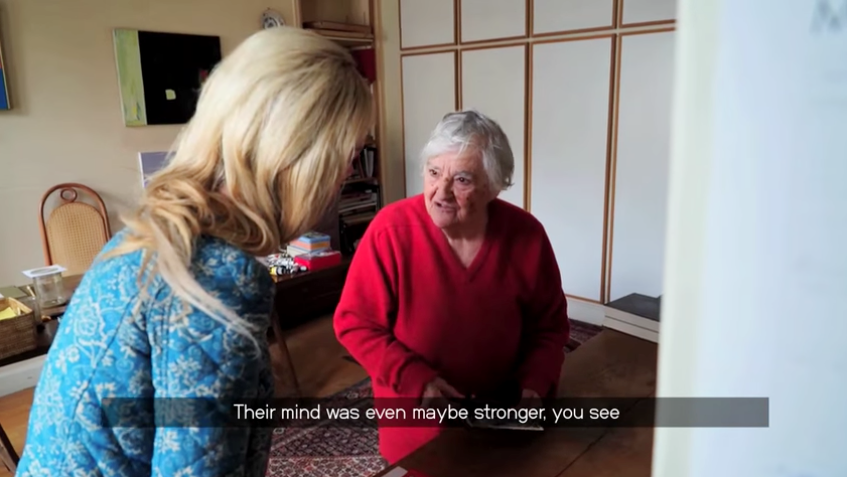
On 5 June 2015, IMMA opened a new exhibition of works by Etel Adnan. In this video, Senior Curator Rachael Thomas speaks with Etel in her home in Paris, France about her art and poetry. Also featured in the video is Rachael Gilbourne, Assistant Curator, introducing the exhibition Etel Adnan at IMMA. See full video here.
…………………………………………………………………………………………………….
Lebanese-born author, poet, playwright and artist Etel Adnan has recently been rediscovered internationally as one of the most influential artists of the 21st Century. This exhibition is the first presentation of her iconic work in Ireland. The exhibition seeks to express the many strands of her practice, and to do so in ways that are revealing of the artist’s avant-garde approach, and her spirit and curiosity for life. Adnan herself requested of the exhibition, to “make it alive!”
Etel Adnan was born in 1925 in Beirut. Leaving her birthplace at the end of 1949 for Paris, she later moved to California in 1955. There she studied philosophy at the University of California, Berkeley, and encountered numerous writers of the Beat generation. Personally shaped by displacement and the trauma of the Lebanese Civil War, Adnan continues to work across languages and continents. For many years as a writer she has been recognised as a significant and distinct figure in the cultural discourses of the Middle East. Alongside her writing, painting, drawing and tapestry have always been key components of her work, and with this exhibition, IMMA is delighted to celebrate Etel Adnan in all her creative vitality.
The exhibition of Etel Adnan runs 5 June – 13 September 2015 in the East Ground, Gordon Lambert Galleries at IMMA.
Video: Rachael Thomas, Senior Curator: Head of Exhibitions, IMMA, in conversation with artist Etel Adnan, in Paris, 16 May 2015 as well as Rachael Gilbourne, Assistant Curator: Exhibitions, IMMA, introducing the exhibition Etel Adnan at Irish Museum of Modern Art, Dublin.
Filmed and produced on the occasion of the solo presentation, Etel Adnan, in the Gordon Lambert Galleries, East Ground, Irish Museum of Modern Art, currently running until 13 September 2015. Photography Tom Byrne.
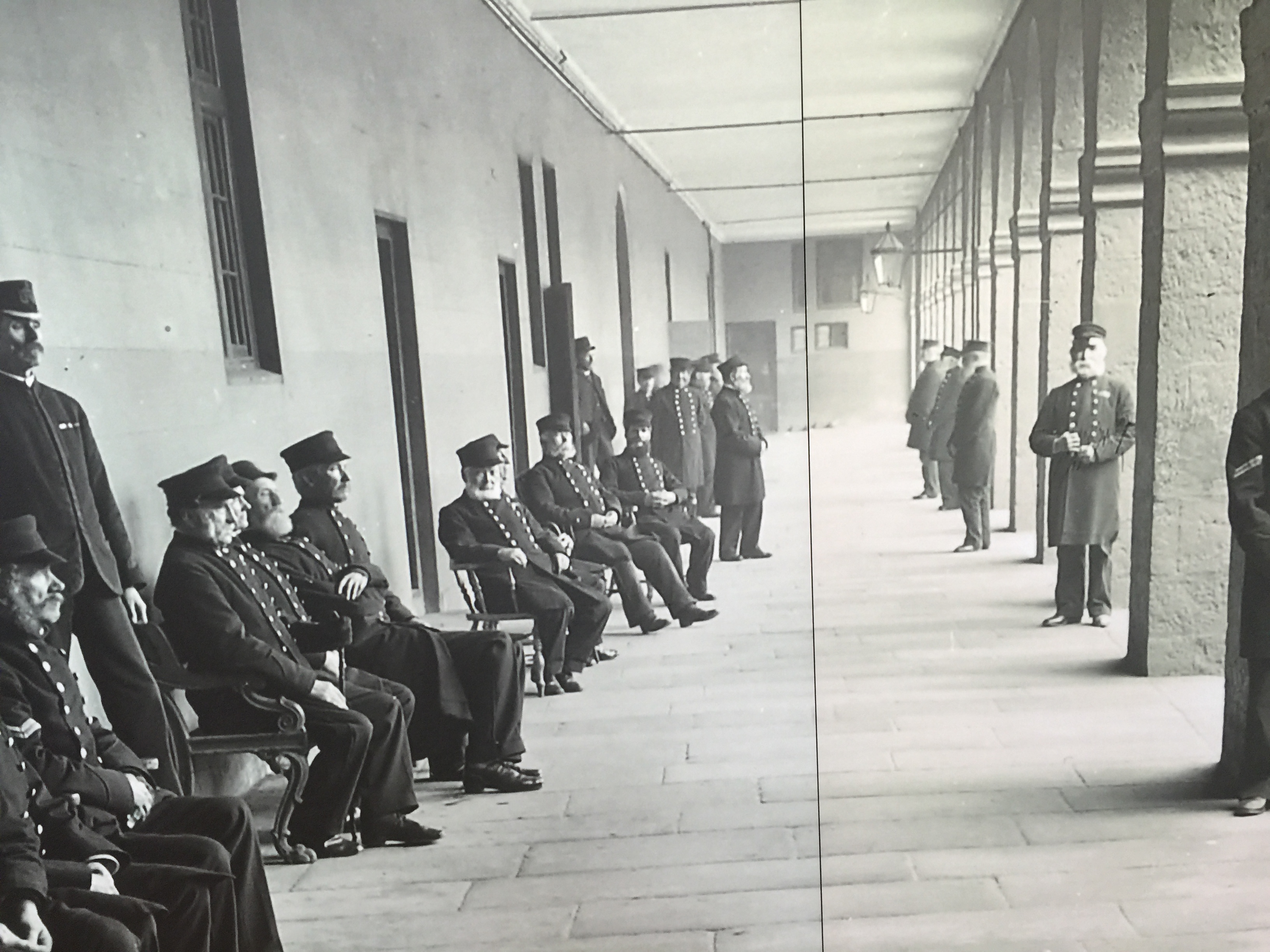
In preparation for a performance at the 2015 SUMMER RISING festival, Doireann Coady & Grace Dyas of Dublin theatre collective THEATREclub, have taken up residence at IMMA’s studios. Here, they provide a behind-the-scenes look into the development of their performance piece.
04 June 2015
Hello IMMA blog readers,
We are Grace Dyas and Doireann Coady. We are part of a collective of eight artists called THEATREclub (www.theatreclub.ie) we work primarily in theatre. We have been invited to take part in a residency here at IMMA, in the beautiful studios, for the next two weeks. We will be making a participatory experience for audiences at the final summer rising event. We have been asked by Sarah Glennie (Director, IMMA) to look at the historical resonances of the building at the Royal Hospital Kilmainham as part of a process leading to the centenary next year of the Easter rising.
We are not interested in dressing up actors as soldiers and recreating the past, we are interested as makers in finding new ways to embody the meaning of history, of cultural weight and particularly of the post colonial ‘now’ of irish culture.
THEATREclub have long been interested in exploring the collective past in a theatrical context ( see previous work ; HEROIN, Twenty Ten & public art commission HISTORY).
We have developed a methodology for looking into the past, always with the hope of bringing it into the present. We don’t want to allow the spectator to step away from its reality. We want to place history and its inherited resonances at the centre of the experience, to bring it to the now ness of our present reality today. Central to that methodology, in keeping with that present ness, we commit rigorously to the intention to forget everything we already know. That contradiction is central to our creative process.
We started off here by meeting Paul, who works on site for OPW. We did a tour of the building and these where the things that made Us interested:
– in the gardens here there is the remains of a war horse, decorated by the queen of England;
– the commander General of the British army was based here on and off. Decisions about britains colonial wars were made on this site;
– photographs of soldiers on the grounds, their eyes, their stance. We are interested in what post traumatic memories are playing out in their minds, we are interested in giving a spectator some sense of empathy with that experience;
– the soldiers uniforms;
– the gardens as a site of healing;
– the fountain in the garden as a site of healing;
– the notion of healing in general;
– horses?
That’s all from us for now we will keep you posted on how we are getting on, we’ll be tweeting from @THEATREclub.
THREATREclub will perform Sunday 14 June during the Garden Rising 12pm-5pm. See the full SUMMER RISING programme here.
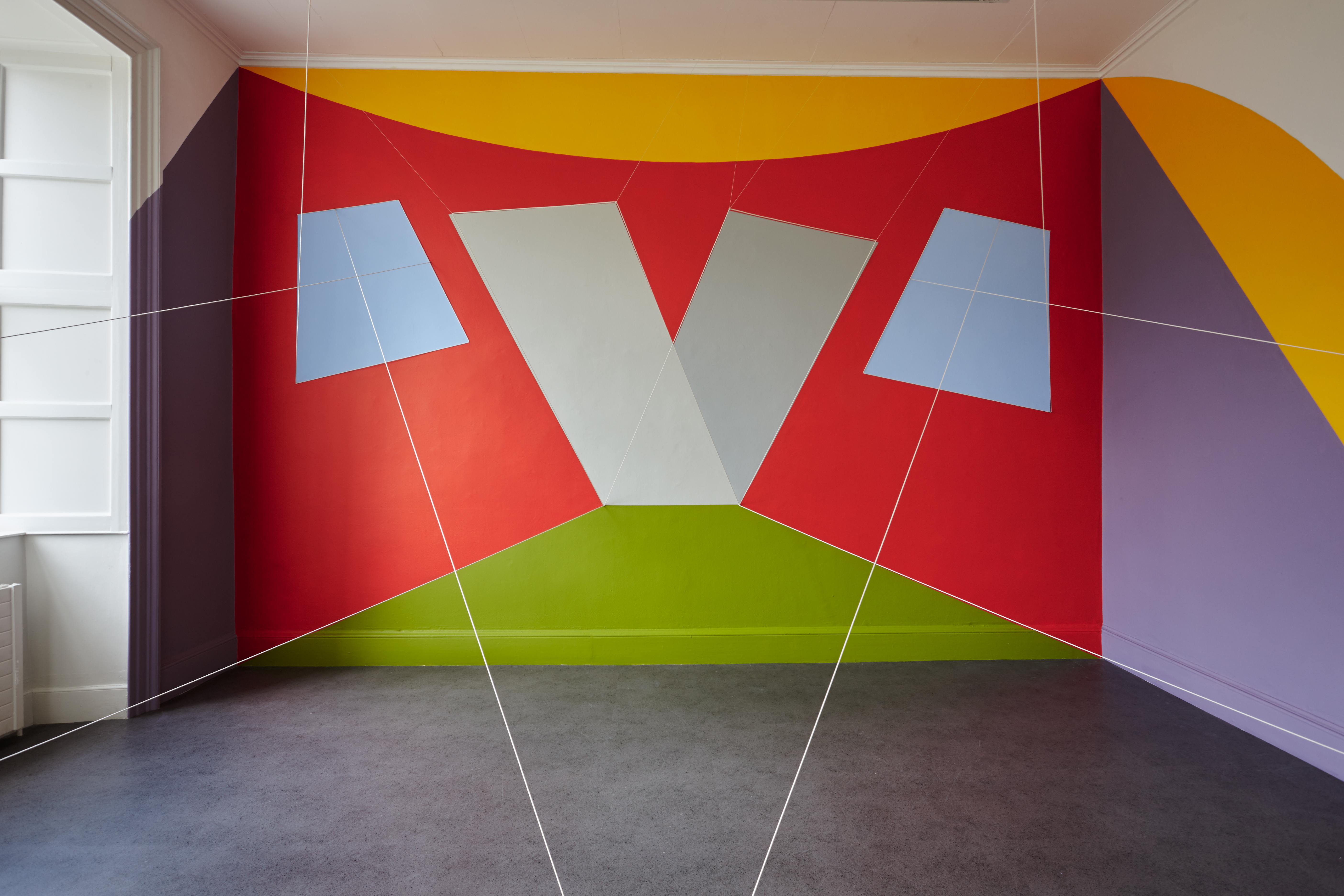
“It (the work) forms itself and it dissolves itself as the viewer moves around the space. They find moments of clarity where everything just snaps into form and when they move away from that point then everything returns to a sort of chaos.” Christina Kennedy, Senior Curator
In this video, Christina Kennedy (Senior Curator, IMMA) provides an in-depth look at a new rope drawing by Brian O’Doherty. The work, entitled The doors to good and evil and the windows to heaven – Christina’s World, Rope Drawing No # 124, 2015, was created specifically for the IMMA space and is on display as part of the IMMA Collection exhibition ‘Fragments.’ Also included is a fascinating insight into the collaborative process between O’Doherty and Kennedy as they planned the work from the artists’ studio in New York.
Brian O’Doherty’s The doors to good and evil and the windows to heaven – Christina’s World, Rope Drawing No # 124, 2015, is on display as part of IMMA Collection: Fragments from 1 May to 26 July 2015.
See full video here.
Image: Brian O’Doherty, The doors to good and evil and the windows to heaven-Christina’s world, Rope Drawing # 124, March 2015, Site-specific installation, nylon cord, water-based house paint, Dimensions variable, Collection Irish Museum of Modern Art. Photo: Denis Mortell
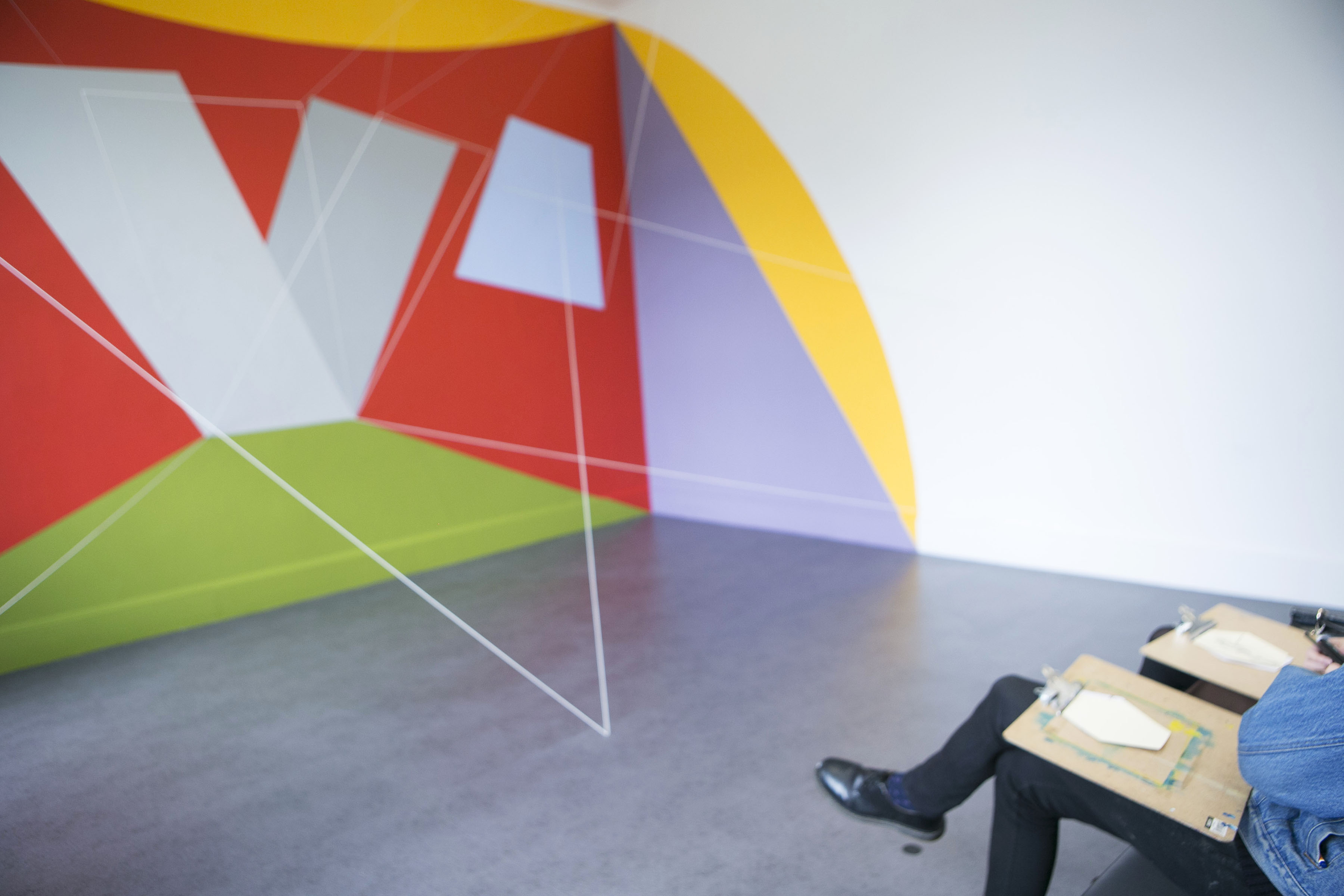
IMMA participated in National Drawing Day on 16 May 2015 with a free, all-ages drawing workshop. Helen O’Donoghue, Senior Curator and Head of Education and Community Programmes brings us a reflection on the event.
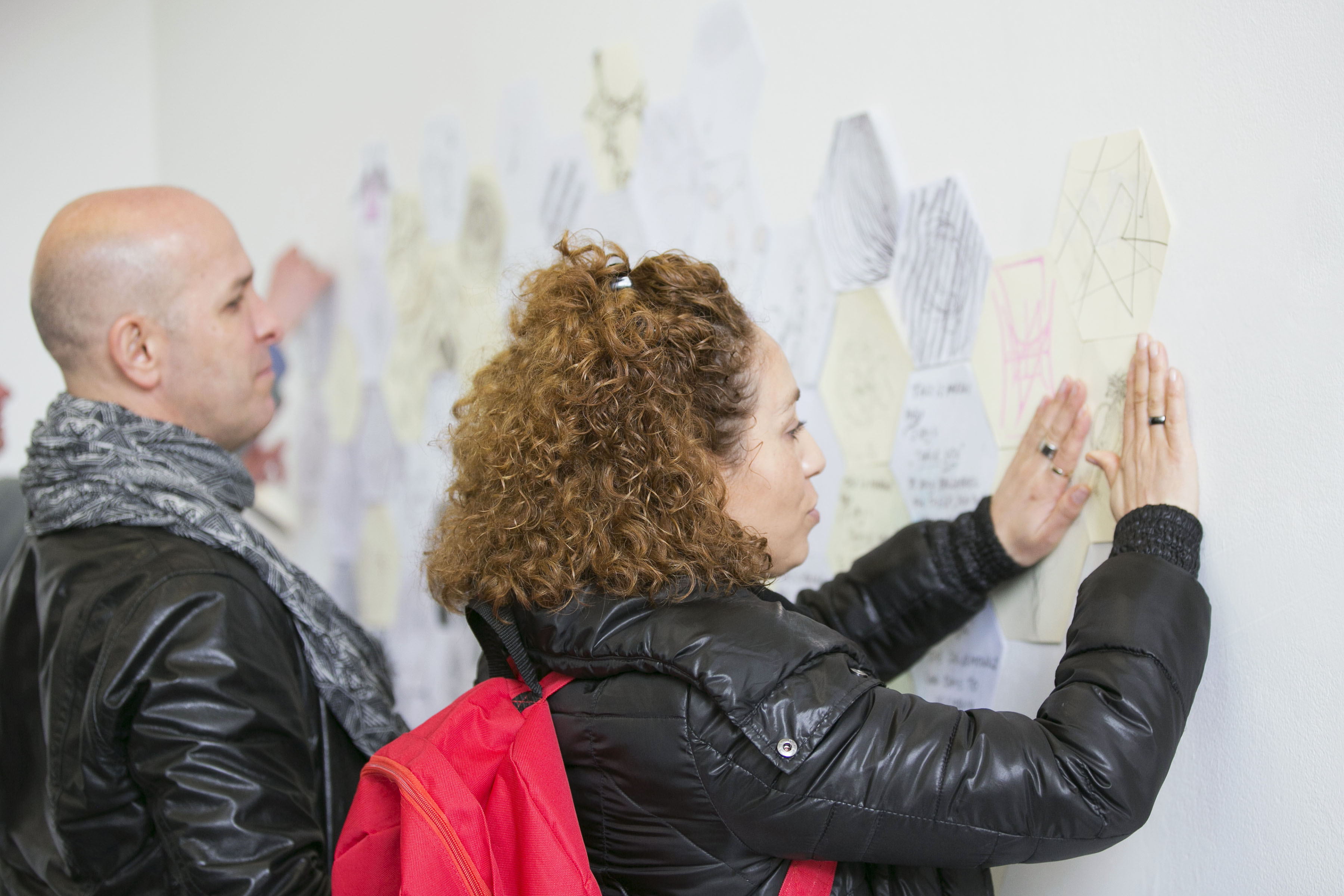
In 1983, the artist Rob Smith (whose work is in the IMMA Collection) said of drawing that it is
‘a way of relating oneself to the world. A cross-over of internal to external…Finding a place in which to sit in the jungle of contemporary living.’
On Saturday 16 May 2015, IMMA was abuzz with people of all ages who were enthusiastically participating in a collaborative drawing as part of the National Drawing Day, an event which ran across 25 venues in Ireland. The invitation was to explore our primal need to draw and to engage with artwork, using our current IMMA Collection exhibition Fragments as a starting point.
Each individual was given a hexagonal shaped piece of drawing paper and a range of pencils from soft to hard. They were then sent to explore IMMA’s galleries and grounds to find something that interested them and then make a drawing. The interpretation of drawing was very open from mark-making to illustration, with every mark authentic to the person who made it.
On completion, each individual was invited to add his or her hexagon to the collaborative wall drawing – a growing wall of shapes in a public space off the reception area. This cell-like structure was reminiscent of large honeycomb as more than 250 individual drawings were unified into one major group expression. The workshop which ran all day was conceived of and facilitated by two of IMMA’s gallery staff, Olive Barrett and Barry Kehoe.
Barry and Olive’s reflection on the day
It was a pleasure to experience the enthusiasm of the general public with regard to the current exhibition programme and Drawing Day. All age groups and many different nationalities engaged with the workshop and were reluctant to leave at the close of the day. Fascinating conversations both before and after the gallery visit occurred by the collective drawing. Visitors were enquiring if they could revisit the drawing at a later date and a teacher said he would bring the idea into his classroom!
This event captured the imagination of so many visitors who were visiting IMMA for the first time and engaged them creatively in looking at and responding to artwork for a longer duration than they might on another visit to a gallery space, experiencing what Rob Smith describes as ‘…finding a place in which to sit in the jungle of contemporary living.’
For people who might wish to explore drawing in IMMA’s Collection in more depth, we have produced a booklet titled What is Drawing…? that will soon be available online here as well as in our bookshop.
IMMA, through its Education and Community programmes, has a number of initiatives that support people to access artworks on exhibition and participation in art making. For further details please see our website. Photos by Fiona Morgan.

In summer 2014 IMMA resident Antonia Low was invited to be part of Dating Service Oslo/Berlin, an exhibition curated by Andreas Schlaegel, at the independent exhibition space AUTOCENTER (Berlin). The show paired nearly 40 artists from both cities to work together. Soon after accepting the proposition Low discovered her selected partner had with-drawn from the exhibition, stirring up unexpected feelings of rejection.
Low decided to address three postcards to the renegade artist. Her text focuses on the alignment of some exceptional experiences she had in her initial days in Dublin creating a lonesome dark undertone in contrast to the iconic imagery of the popular tourist locations on the front of the cards. The cards were posted to the gallery and displayed in the gallery window where both sides were visible.
Low split her IMMA residency in two and we are delighted to have her back with us, since Monday 20th April 2015, to finish out her final month living and working at the Museum.
POST CARD 1
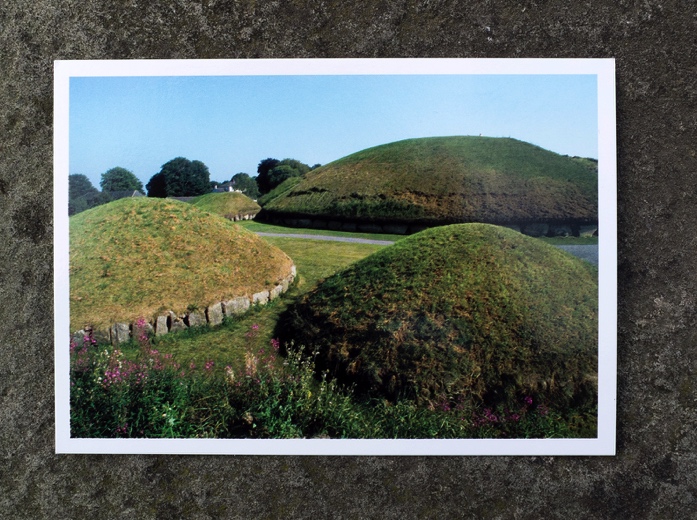
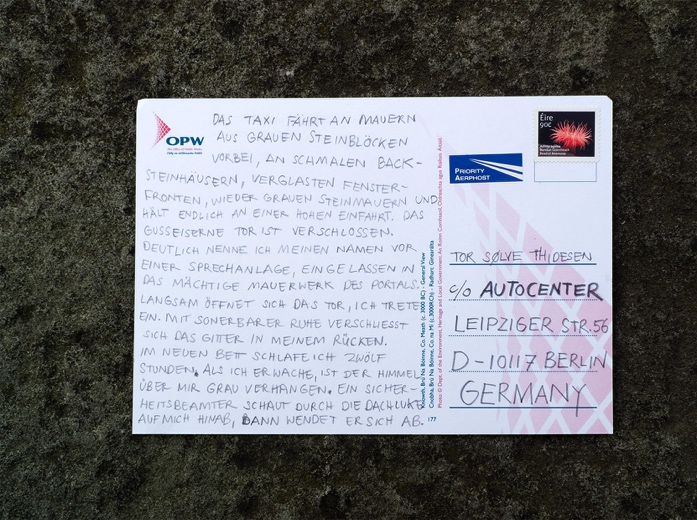
The cab passes walls made of grey stone blocks, narrow brick houses, glass facades, again grey stone walls, and finally stops in front of a high entrance. The cast-iron gate is closed. With precision I speak my name in front of an intercom that is built into the massive stonework of the portal. Slowly the gate opens, I step in. With a peculiar calmness the bars close behind my back. I sleep twelve hours in the new bed. As I awaken, the sky above is dull and grey. Through the roof hatch a security guard watches me, then turns away.
POST CARD 2
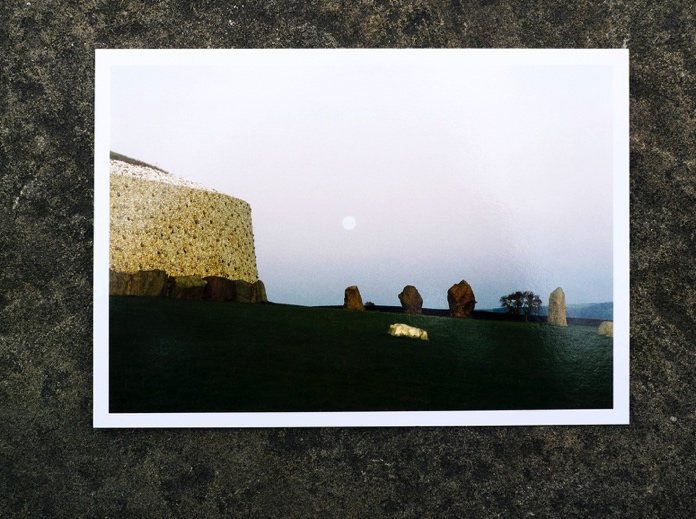
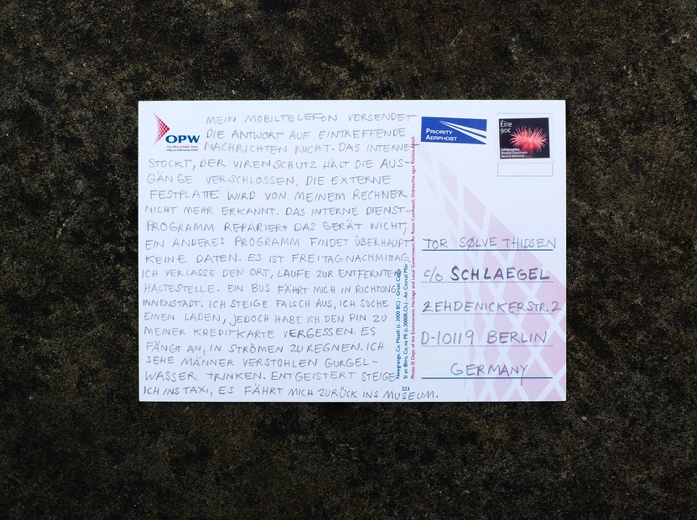
My mobile phone fails to send answers to incoming messages. The internet connection stalls, the virus protection blocks the ports. My computer does not recognise the external hard disk any longer. Its internal utility programme refuses to repair the device, another programme cannot recognise any existing data. It is Friday afternoon. I leave my location and walk to a distant bus stop. A bus takes me to town. I get off at the wrong stop, I search for a shop, but realise that I forgot the PIN to my credit card. It starts to rain. I see men secretly drink gargle. Aghast I get into a cab that drives me back to the museum.
POST CARD 3
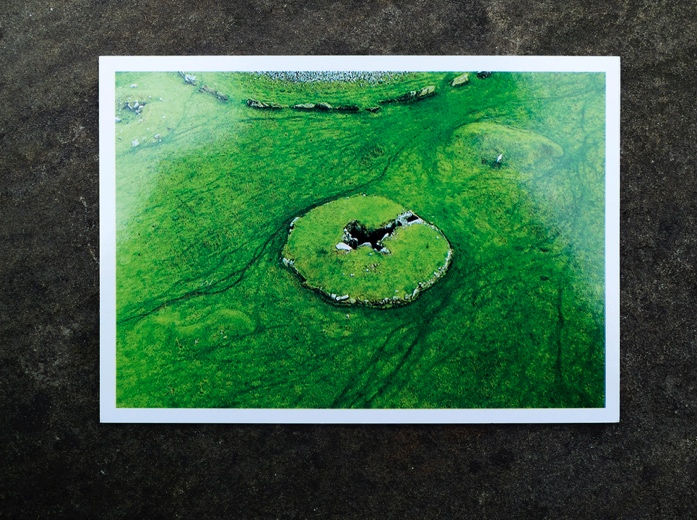
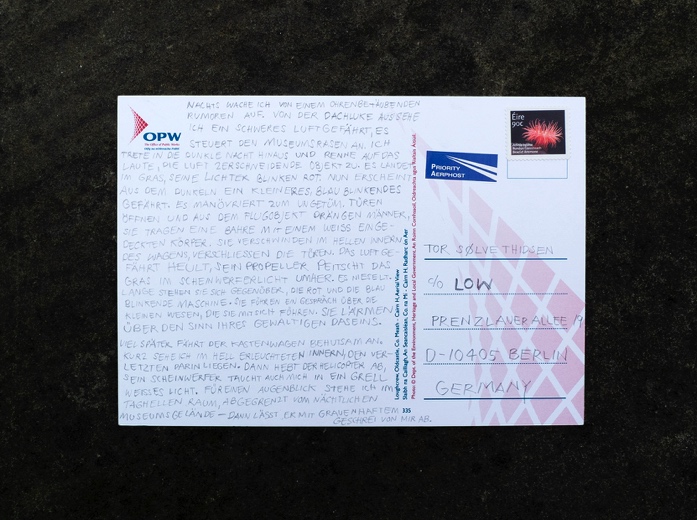
At night I awaken to an ear-piercing noise. From the roof hatch I see a heavy aircraft steering towards the museum’s lawn. I step into the dark night and run towards the loud, air-beating object. It lands on the grass, its lights blinking red. Now, out of the dark, a smaller, blue blinking vehicle appears which manoeuvres towards the other creature. Doors open and men surge out of the aircraft carrying a body covered in white. They disappear inside the bright vehicle and shut the doors. The aircraft howls, its propeller whips the grass in the beam of its searchlight. It drizzles. For a long while they stand opposite each other, the machines blinking red and the blue. They converse about the small creatures that they carry along. They fuss about the meaning of their enormous existence. Much later the vehicle carefully starts to move. When it passes, I glance into the bright interior and see someone injured. Then the helicopter takes off, its searchlight bathes me in the same harsh white light. For a moment, I am set into a space as light as day, isolated from the museum ground at night. Then it releases me with a ghastly roar.
Antonia Low takes the means of expression in her art from interaction with the environment as a consciously applied instrument. Her installations make reference to spatial circumstances. Through re-evaluations, disclosures, and allocations, Low thematises their different aspects and finds new points of emphasis. She pursues the overlap of different layers of temporality and spatiality and brings the transitory substance of spaces to light.